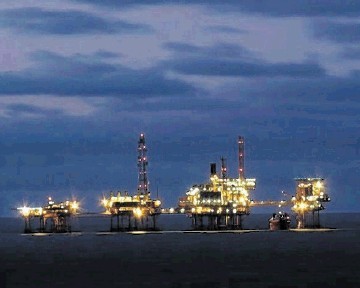
Just over 10 years ago, French independent Perenco was a relatively new player in the oil and gas industry with not a single asset in the North Sea.
By the end of this year the firm will have built up the largest portfolio of assets on the UK Continental Shelf, outstripping both BP and Shell.
Through its latest acquisition from BP – the Southern Gas Assets (SGA), a haul of 18 offshore platforms – it will have amassed a collection of 48 platforms, two major onshore gas terminals (Bacton and Dimlington) and some 2,500km (1,553 miles) of subsea pipelines with a staff of about 1,200.
It will also be hoping to give the SGA assets – currently producing about 30,000 barrels of oil equivalent (boe) per day – the same treatment it gave those it bought off BP in 2003 when it entered the North Sea.
Perenco UK managing director John Sewell says the firm has added 15-plus years to the life of its southern North Sea assets over and above BP’s plans already.
With the SGA acquisition, he thinks there is more to be had. “It will add 30,000 boe per day,” he said. “We would be looking to increase that as we get to understand the assets and invest more money in them, for future development, not just existing production. I do believe there are opportunities.
“It is a similar asset base to our existing asset base, the reservoirs are not too different – Rotliegend sandstone – some of it is just a little bit deeper.”
The opportunities around some of the longest established fields in the UK basin have already been proved by Perenco this year.
It is currently constructing the Leman South West subsea tieback – a discrete accumulation of about 66billion standard cubic feet (bscf) at virgin pressure found about 5.7 miles (9.2km) from the main Leman compression hub installation – due on stream in May next year.
This subsea development, found through reinterpretation of existing seismic data on Leman and an exploration well last year, is in turn due to have a further two wells, accessing an additional 42 bscf, tied into it.
“For me it demonstrates there are still economic recoverable reserves remaining in the southern North Sea and it is my belief, as I’ve said before, that we will continue to be operating these fields well in to the mid 2020s, 2025s even 2030s,” said Sewell.
New wells are also being drilled on other Perenco southern North Sea assets, as the mature field operator seeks incremental production.
On its second main area, the Inde field, the firm is to drill a side track from an existing slot on the Inde 18B platform this August, with first gas – bringing an additional 1,131,000 cu.m of gas per day – expected in October via the Inde 23A platform and Bacton.
Perenco is also planning to drill a side-track on Tyne North using the Ensco 80 possibly in the third quarter of this year, to bring on a new production well. This was following new seismic acquisition shot in partnership with another operator. Sewell says there could be more in both areas.
Now the firm is working on a compression rationalisation programme offshore, with the plan of lowering wellhead pressure to increase recovery from the Leman and Inde fields.
“We are potentially looking at further drilling in 2013, subject to us being able to get a drilling rig, to drill a second Leman well and maybe something on the new BP SGA assets,” said Sewell.
Perenco’s activities are also onshore. It has recently completed works transferring all of the gas previously routed through ENI’s terminal at Bacton – from Hewett, LAPS and Thames – to its terminal.
All of which gives some hint at the work that will start when Perenco takes over its latest assets from BP – the manned West Sole Alpha, Ravenspurn North and Cleeton platforms, 15 normally unmanned installations and the Dimlington gas terminal near Hull in East Yorkshire.
All fit the Perenco North Sea program – of taking on and operating mature and frequently unmanned assets with a strict efficiency.
Current production for Perenco UK is from 17 fields, including Inde (Indefatigable) and Leman, and is about 60,000 boe per day.